Stonescaping is a very common, sleek, and clean approach to sprucing up a garden. Stones help create a different texture among the greenery in a garden, and they’re perfect if you want to create a drought-tolerant, low-maintenance outdoor space, because they can function as mulch for your foliage plants.
With a wide variety of rocks out there, you can build entire rock gardens (such as a serene zen garden), using stones to create focal points and provide accents. While you can place statement, stand-alone rocks, piles or blocks of stones can also be functional for walls, pathways, and seats in your garden.
If you’re curious about incorporating rockery into your garden, we’ve put together a guide on the most common landscaping stones, breaking down what you need to consider with each type.
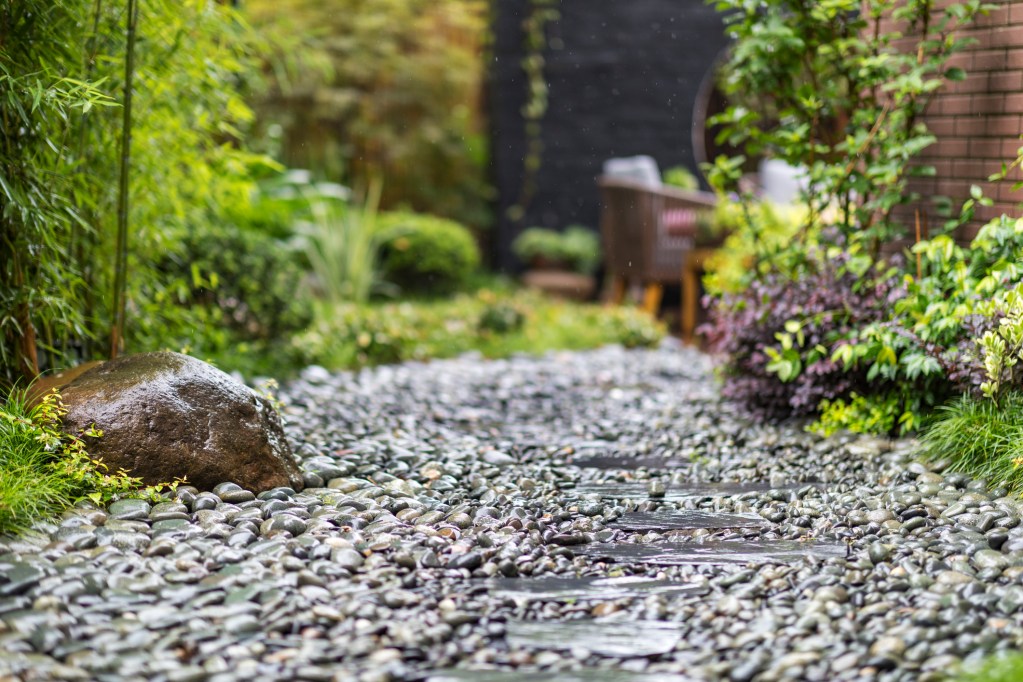
How do you pick the right rocks for your rock landscaping project?
To get started on your rock landscape, check out what’s available at your local quarries, rock yards, and home improvement stores — you’ll save on transportation and other costs this way. But also keep in mind what project you’re pursuing instead of simply buying what’s available. It makes sense to prioritize boulders for water features and flagstones for pathways. It may be helpful to work with a contractor or designer to bring your vision to life.
To help you get a feel for the different kinds of rocks out there, here are basic types of rocks for landscaping that you should know about.
Pea gravel
Pea gravel is a tiny stone (usually between 1/8 and 1/4 of an inch big) that’s ideal for filling in driveways, patios, fire pits, and more. It’s also great for filling spaces between larger landscaping rocks, such as boulders and flagstones. Functionally, it’s also the perfect answer for controlling weeds and providing drainage, which could be great for a drought-tolerant garden.
Unlike mulch, it won’t break down over time. While it won’t provide nutrients to your soil, it’ll last for a long time. Keep in mind that it can be rough and bumpy to walk on and harsh weather can displace it.
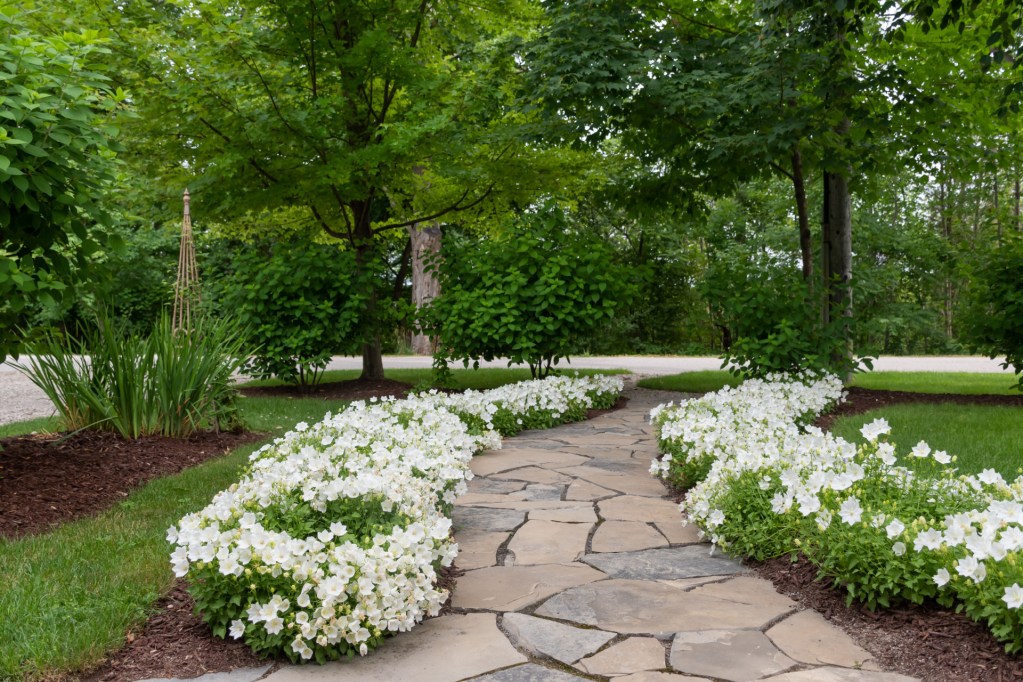
Flagstone rocks
From sandstone to quartzite, flagstone rocks are smooth and flat, which makes them versatile for creating paths in high-traffic areas. You might also find them as stepping stones or edging around garden beds. Made up of fragmented sedimentary rocks, they can come in a wide variety of colors.
When it comes to maintenance, they’re fairly easy to clean, as their large surface area makes them easy to sweep or rake through. Bear in mind that they can be pricey since they’re so big (about 1 to 2 feet wide). Some weather patterns may impact Flagstone rocks, in that they get very hot during the summer and very slippery during bouts of rain.
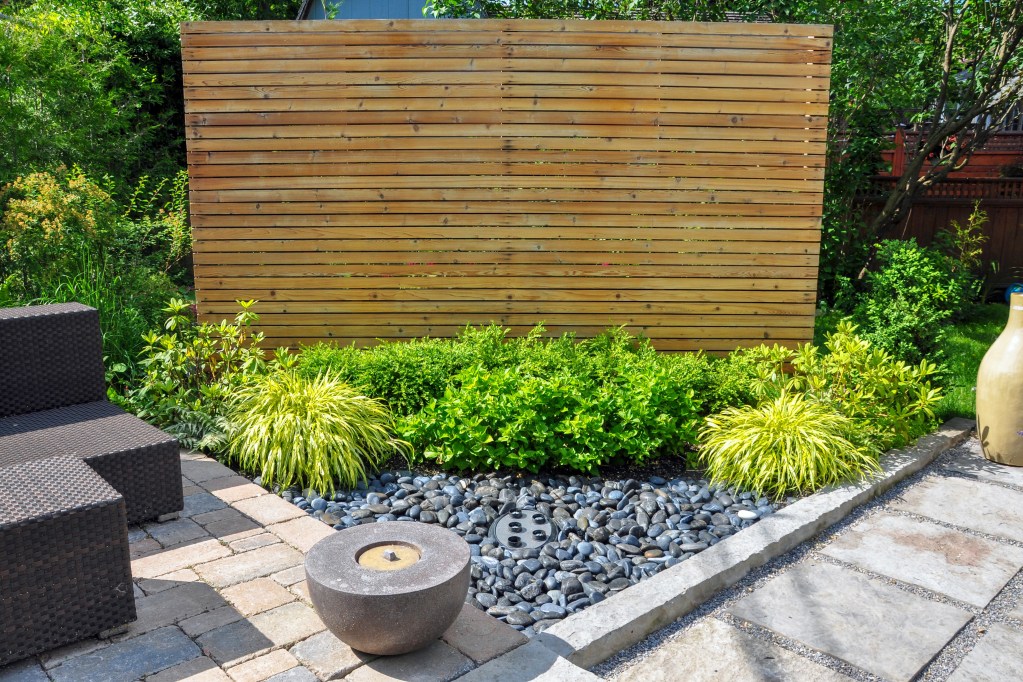
River rocks
Found near freshwater sources, river rocks feature a naturally smooth and polished appearance. They’re actually pretty similar to pea gravel stones, except they feature softer edges and are usually much bigger. About 1 to 2 inches in diameter, they can be used to fill in patios, but they can also work for accenting garden flowerbeds and succulent plant arrangements.
And, of course, they look great with water features, perfect for a basin around a fountain. River rocks do tend to be pricier than pea gravel and might be a bit dangerous as a walking surface.
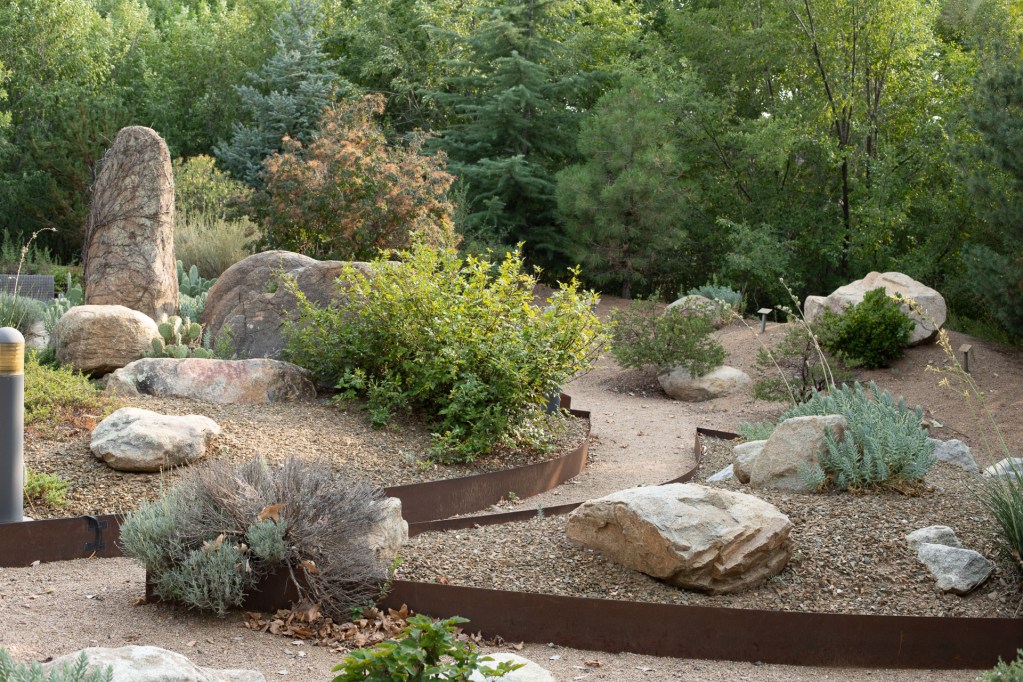
Boulders
Adding a weathered texture, boulders are perfect for focal points in a garden. You can use them to line a walkway or section off certain areas of your landscape. They can also work perfectly beneath a tree or by a garden bed — don’t be afraid to get creative!
When it comes to functionality, boulders can also be quite useful for building retaining walls and benches in a landscape. Do keep in mind that they’re very heavy, so you’ll likely have to hire help to place them in your outdoor space.
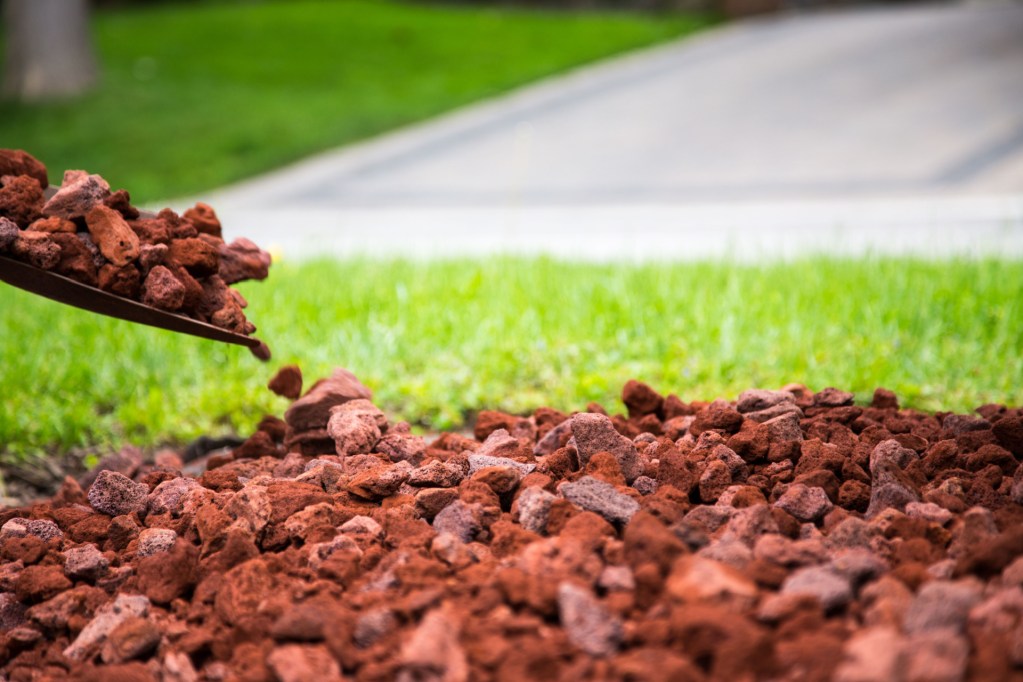
Lava rocks
Jagged and porous, lava rocks, or volcanic rocks, are great for mulching your soil. Small in size, they help your soil keep its moisture, provide weed control, and offer drainage. They can be gray, black, or red in color, so they also create a visual contrast in your space. One thing to keep in mind is that lava rocks do tend to be very light, so harsh weather can scatter them around.
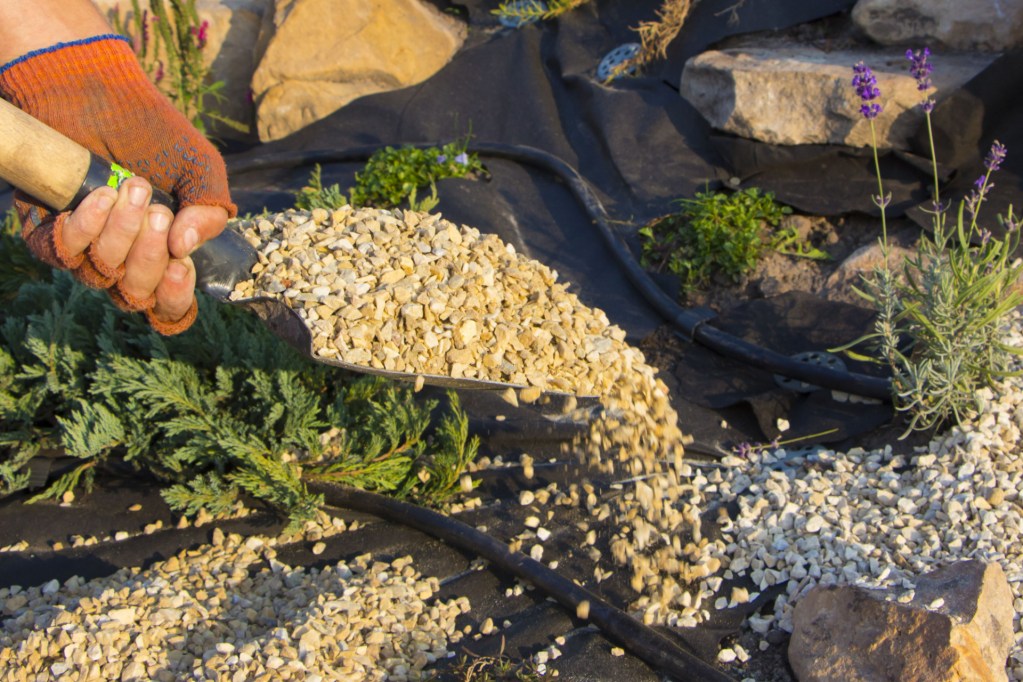
Marble chips
If you’re looking for a bit of shimmer and luxury, marble chips are probably one of the fanciest rocks you can incorporate into your landscape. When light hits these white rocks, they give off a luminous appearance. Like gravel, you can use them for filling walkways and garden beds.
When using them in your garden, it’s important to keep in mind that they can make the surrounding soil more alkaline, which can be good for some plants (like hydrangeas) but bad for others (like magnolias).
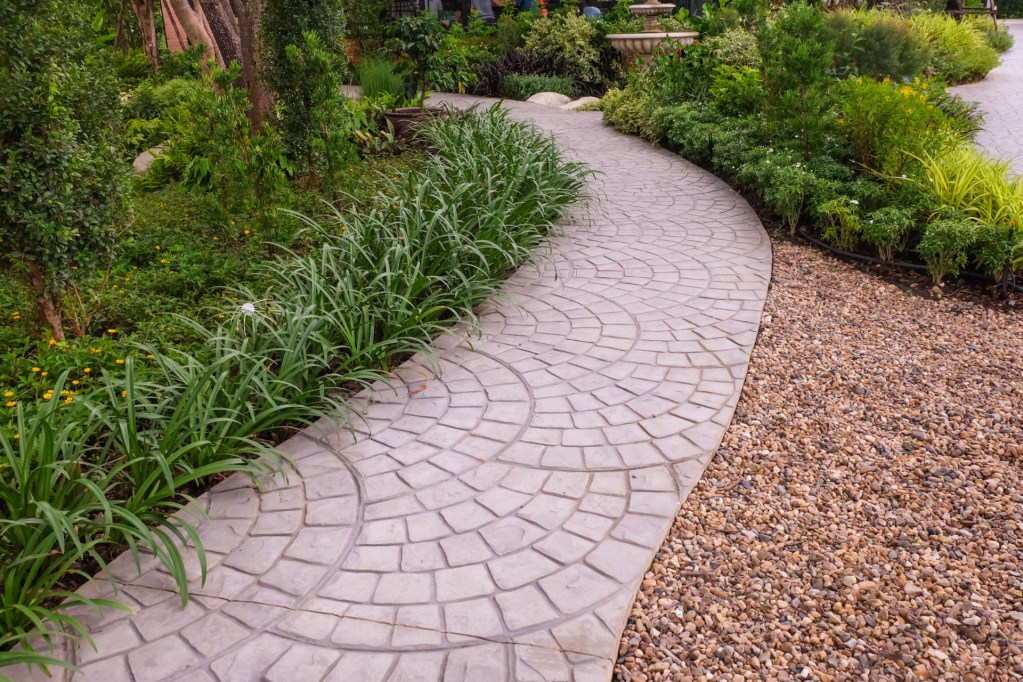
Cobblestones
Often used for walkways and driveways, cobblestones have a bit of a classic charm to them. They typically come from granite from riverbeds and are cut into rectangles or other shapes. However, you might find them in their round state at a rockery. Besides being used for entire paths, they also work well for walls and plant beds. Do keep in mind that cobblestone can be uneven as a landscaping rock, which makes removing snow and walking long distances difficult.
Building a rock garden can be a neat, low-maintenance alternative to keeping a lawn. With so many stones available out there, you can find just the right textures, colors, and sizes for your stonescape vision. From simple pea gravel to statement boulders, you’ll be able to create a stunning, easy-care space with a little bit of planning and manual labor.
Editors' Recommendations
- 6 tips you should keep in mind when building your own drought-tolerant garden
- Could electrogardening be the way of the future?
- Focus on color: Red plants that will bring a festive vibe to any home or garden
- Indoor gardening: Hydroponics growing tips for any plant
- The best vegetables to plant in November





